sorĉistino
Unregistered
Posts: N/A
Registered: N/A
Member Is Offline
|
|
Kwitra build
Here's my attempt at building a kwitra. Feedback welcome.



|
|
|
sorĉistino
Unregistered
Posts: N/A
Registered: N/A
Member Is Offline
|
|
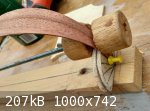

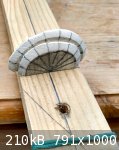


|
|
|
sorĉistino
Unregistered
Posts: N/A
Registered: N/A
Member Is Offline
|
|
The bowl taking shape.
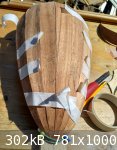
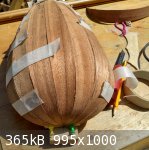
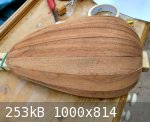
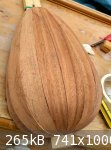

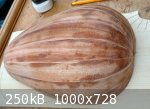
|
|
|
sorĉistino
Unregistered
Posts: N/A
Registered: N/A
Member Is Offline
|
|
The neck is now taking shape. I have decided to go with a scarf joint as that's what I'm used to, and this is the first bowl back I've ever made.
I'm also used to using a Spanish heel like a classical guitar (with the neckblock and neck all one piece) and haven't done a separate neck like this
for a long time. I was planning to do a dowel-reinforced joint as that seems to be the normal for ouds? Suggestions welcome.
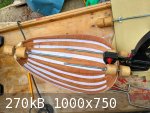
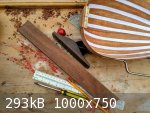
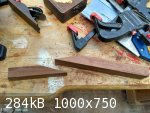
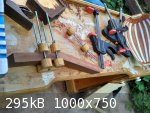
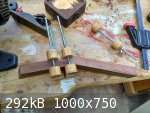

|
|
|
MattOud
Oud Junkie
    
Posts: 298
Registered: 1-18-2017
Location: Ontario, Canada
Member Is Offline
Mood: Feeling Pretty G'Oud
|
|
I cannot make suggestions as i know nothing about this instrument at all, but wanted to say i am impressed you even gave it a go!
It looks really nice so far! I am unfamiliar with the Kwitra, but you have intrigued me to look further... Nice job!
|
|
|
sorĉistino
Unregistered
Posts: N/A
Registered: N/A
Member Is Offline
|
|
Quote: Originally posted by MattOud  | I cannot make suggestions as i know nothing about this instrument at all, but wanted to say i am impressed you even gave it a go!
It looks really nice so far! I am unfamiliar with the Kwitra, but you have intrigued me to look further... Nice job! |
Thanks!
The kwitra (also transliterated quitra, kuitra or kouitra) is a fretless lute from western north Africa. It is related to the oud and probably
developed during the time of Al-Andalus. It has a more slender shape than the oud, a slightly longer neck and only 4 courses of strings.
As for suggestions, I think these instruments are now quite unusual and so therefore difficult to research, so I am borrowing oud and lute techniques.
|
|
|
Jody Stecher
Oud Junkie
    
Posts: 1373
Registered: 11-5-2011
Location: California
Member Is Offline
|
|
The old European equivalent of Kwitra was an instrument called Quintern. I suspect that the modern Cuatro, in all its forms, derives its name from
Kwitra/Quintern .
|
|
|
sorĉistino
Unregistered
Posts: N/A
Registered: N/A
Member Is Offline
|
|
Quote: Originally posted by Jody Stecher  | | The old European equivalent of Kwitra was an instrument called Quintern. I suspect that the modern Cuatro, in all its forms, derives its name from
Kwitra/Quintern . |
Isn't cuatro meaning four? The Venezuelan cuatro has four strings, and the original Puerto Rican cuatro (cuatro antiguo) used to have 4 strings before
it was expanded to four doubled courses and then later to 5 for 10 strings in total.
The quintern/gittern and kwitra are certainly related through the oud though.
|
|
|
sorĉistino
Unregistered
Posts: N/A
Registered: N/A
Member Is Offline
|
|
Neck carving...
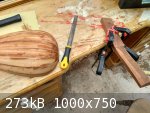
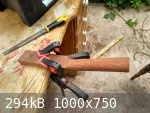
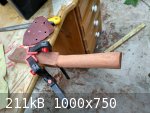
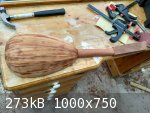
|
|
|
Greg
Administrator
       
Posts: 928
Registered: 7-22-2004
Location: Brisbane, Australia
Member Is Offline
Mood: Serene
|
|
I must say how refreshing it is to see someone sharing details of building an instrument. In years gone by, we regularly had threads like this and I,
for one, really enjoyed following them.
Thanks very much for sharing this with us, Sorĉistino.
Greg
|
|
|
Jody Stecher
Oud Junkie
    
Posts: 1373
Registered: 11-5-2011
Location: California
Member Is Offline
|
|
Quote: Originally posted by sorĉistino  | Quote: Originally posted by Jody Stecher  | | The old European equivalent of Kwitra was an instrument called Quintern. I suspect that the modern Cuatro, in all its forms, derives its name from
Kwitra/Quintern . |
Isn't cuatro meaning four? The Venezuelan cuatro has four strings, and the original Puerto Rican cuatro (cuatro antiguo) used to have 4 strings before
it was expanded to four doubled courses and then later to 5 for 10 strings in total.
The quintern/gittern and kwitra are certainly related through the oud though. |
That would be the logical assumption, especially because there is a three course instrument called Tres. But looking deeper into the matter one finds
intriguing things. The sound, construction, and musical role of the kwitra are similar to the various forms of cuatro. The kwitra is strung tightly.
The strings are relatively short. The instrument is built to withstand pressure. It is played hard so that it will be loud enough for the entire
ensemble of musicians to hear. It is a sort of percussion instrument. It is not unusual for a kwitra player to be the ensemble leader. The little bit
we know about the European quintern suggests a similar role and purpose. Sometimes in old European church fresco painting one sees a pair of angels
depicted. One plays the lute with fingers. The peghead is bent back as in an oud. The other is playing the quintern. The peghead angle is not extreme.
The strings are played with a plectrum. The shape of the instrument body is more narrow and shallow. This is like the kwitra. There are so many
Arabic-derived words in the Spanish language of the New World. It is just possible that there is a link from kwitra to quintern to cuatro.
.
|
|
|
sorĉistino
Unregistered
Posts: N/A
Registered: N/A
Member Is Offline
|
|
I decided to make a lute-style pegbox instead, because the previous neck was too heavy and made the instrument head-heavy.
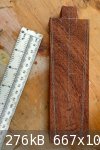

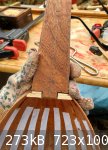
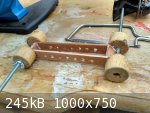
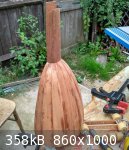

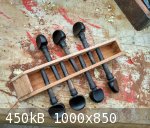
|
|
|